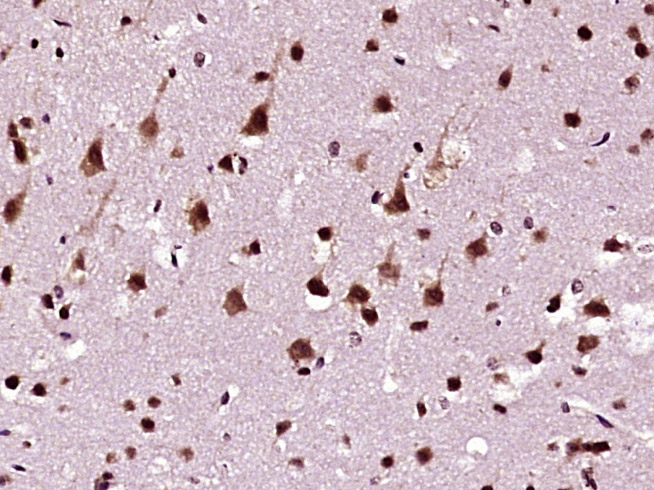
IHC-P analysis of human lung carcinoma tissue using GTX87722 HNRPDL antibody. The picture on the right is blocked with the synthesized peptide.
HNRPDL antibody
GTX87722
ApplicationsImmunoHistoChemistry, ImmunoHistoChemistry Paraffin
Product group Antibodies
ReactivityHuman
TargetHNRNPDL
Overview
- SupplierGeneTex
- Product NameHNRPDL antibody
- Delivery Days Customer9
- Application Supplier NoteIHC-P: 1:50~1:100. *Optimal dilutions/concentrations should be determined by the researcher.Not tested in other applications.
- ApplicationsImmunoHistoChemistry, ImmunoHistoChemistry Paraffin
- CertificationResearch Use Only
- ClonalityPolyclonal
- ConjugateUnconjugated
- Gene ID9987
- Target nameHNRNPDL
- Target descriptionheterogeneous nuclear ribonucleoprotein D like
- Target synonymsHNRNP, HNRPDL, JKTBP, JKTBP2, LGMD1G, LGMDD3, laAUF1, heterogeneous nuclear ribonucleoprotein D-like, A+U-rich element RNA binding factor, AU-rich element RNA-binding factor, JKT41-binding protein, hnRNP D-like, hnRNP DL, limb girdle muscular dystrophy 1G (autosomal dominant), protein laAUF1
- HostRabbit
- IsotypeIgG
- Protein IDO14979
- Protein NameHeterogeneous nuclear ribonucleoprotein D-like
- Scientific DescriptionThis gene belongs to the subfamily of ubiquitously expressed heterogeneous nuclear ribonucleoproteins (hnRNPs). The hnRNPs are RNA binding proteins and they complex with heterogeneous nuclear RNA (hnRNA). These proteins are associated with pre-mRNAs in the nucleus and appear to influence pre-mRNA processing and other aspects of mRNA metabolism and transport. While all of the hnRNPs are present in the nucleus, some seem to shuttle between the nucleus and the cytoplasm. The hnRNP proteins have distinct nucleic acid binding properties. The protein encoded by this gene has two RRM domains that bind to RNAs. Three alternatively spliced transcript variants have been described for this gene. One of the variants is probably not translated because the transcript is a candidate for nonsense-mediated mRNA decay. The protein isoforms encoded by this gene are similar to its family member HNRPD. [provided by RefSeq, May 2011]
- ReactivityHuman
- Storage Instruction-20°C or -80°C,2°C to 8°C
- UNSPSC12352203





